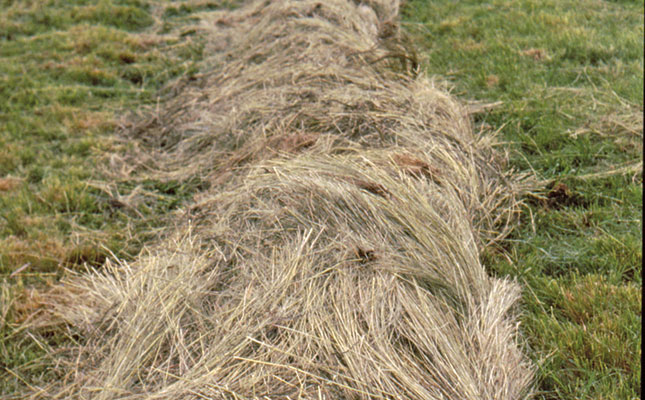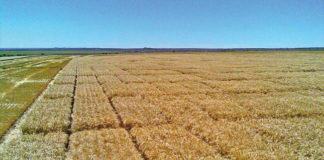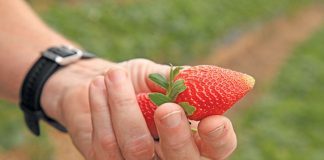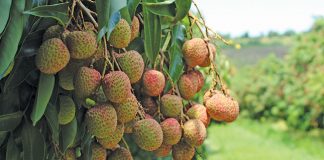
Photo: FW Archive
When rounding off cattle for slaughter, you can either grow and mix feed on the farm or buy ready-mixed feed. If you have only a few animals, buying a mixed ration may be cheaper and more practical.
A ruminant such as a cow obtains nutrients from plant-based food by fermenting it through microbial action in a specialised stomach.
This consists of four parts: the rumen, reticulum, omasum and abomasum. Ruminant micro-organisms in the first three enable the animal to digest fibrous material that a single-stomach animal cannot digest.
READ Implementing a holistic grazing management plan
This produces essential nutrients such as amino acids and B-vitamins. The presence of these nutrients is why beef is so good as human food.
Cattle require protein, energy, water, fat, minerals and vitamins. The amounts vary according to the environment, the cow’s age, the time of year, and production goals and stages.
Availability of feedstuff also varies by location and season. In an intensive feeding system, up to 75% of the cost of rearing an animal goes to feed.
High-quality legume hay, such as lucerne and clover, usually contains enough protein and carbohydrate for growth and maintenance. Poor quality feed such as grain straw, grass straw or rain-damaged hay must normally be supplemented to increase protein or energy intake.
You can buy these supplements from your feed supplier.
Beef cattle do not usually need vitamin A, B or E supplementation as they can obtain these vitamins from normal-quality feed.
However, feeding dry, bleached-out hay can result in a vitamin A deficiency. Symptoms include watery eyes, a rough-haired coat, night blindness and poor weight gain.
Vitamin D is formed by the action of sunlight on animal tissue. If you keep your cattle indoors for an extended period, vitamin D deficiency can become a problem.
Minerals: For health and good growth
Minerals are inorganic compounds that help build bones and teeth, and contribute to protein and lipid functioning. They can be provided via natural feed or supplementation.
The three main categories of mineral supplement are:
- Salt, usually sold as ‘iodised salt’. This does not contain other minerals.
- Trace mineralised salt, which consists of a large percentage of salt with varying amounts of copper, iron, iodine, cobalt, manganese, selenium and zinc.
- Mineral mixes, which usually contain major minerals such as calcium and phosphorus, as well as trace minerals and some salt.
You can provide supplements either as a lick, or mix them into feed. The composition will vary according to your location and feedstuffs.
Clean water is essential at all times. Under normal conditions, a bovine will drink between 20ℓ and 70ℓ of water a day, depending on its size, age, and the weather.
Heat dramatically increases water consumption.
Roughage: get the quantity right!
Roughage is a feedstuff that is low in digestible nutrients; examples are hay, pasture and silage.
The percentage of roughage and concentrate in a beef cattle ration depends on the class of animal being fed.
For example, feedlot steers are fed mostly grain and a little roughage, while breeding cows can be wintered on good-quality roughage alone. Beware of high-quality legume hay such as lucerne; it can cause bloat, especially in a hungry animal.
As a rule, a beef animal consumes up to 3kg of feed a day for each 100kg of body weight. This means that a 300kg weaned calf will eat 9kg of high-quality lucerne hay daily to reach an average weight of 450kg.
When a young beef animal reaches between 250kg and 300kg, it is usually placed on a high-grain (high-energy) ration for 100 days or until it reaches slaughter weight.
Should you buy feed or grow and mix it yourself?
This will depend on the number of animals you are finishing for slaughter. With only a small number of animals, it may be more economical to buy the mixed ration from a feed dealer.
Growth promotants
Growth promotants, including implants, may have a place in your operation. They are widely used and have been proven safe. Ionophores are feed additives that decrease rumen upset, increase feed efficiency and increase daily gain.
These chemicals can improve gain significantly, but do not compensate for poor management.
Source: Directorate of Animal and Aquaculture Production, Establishing and managing a small beef herd, Department of Agriculture, Forestry and Fisheries.











